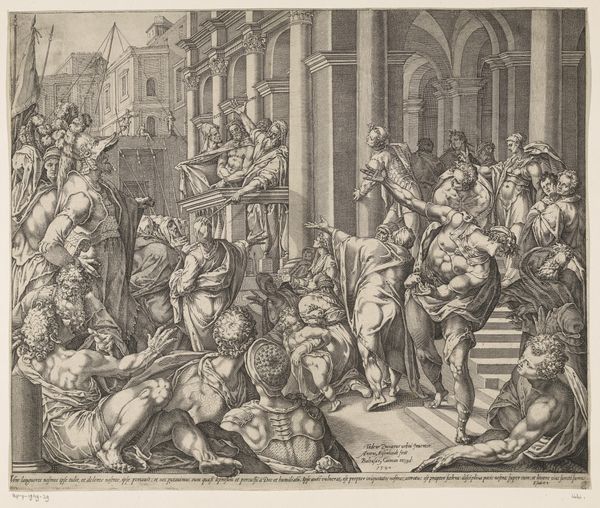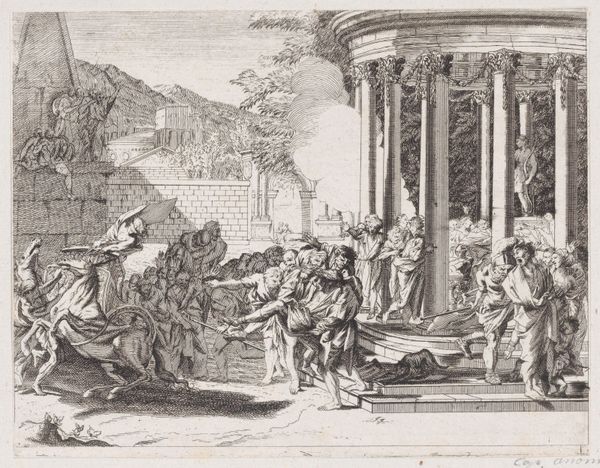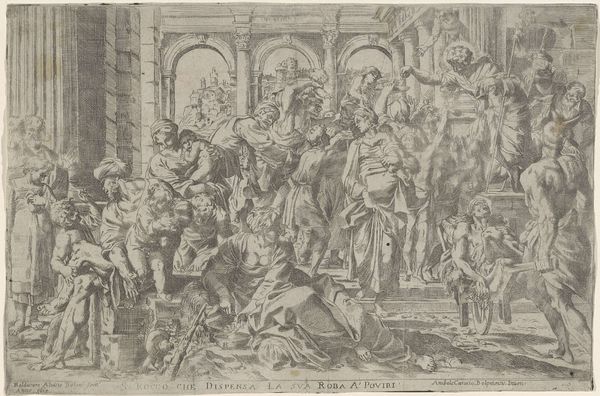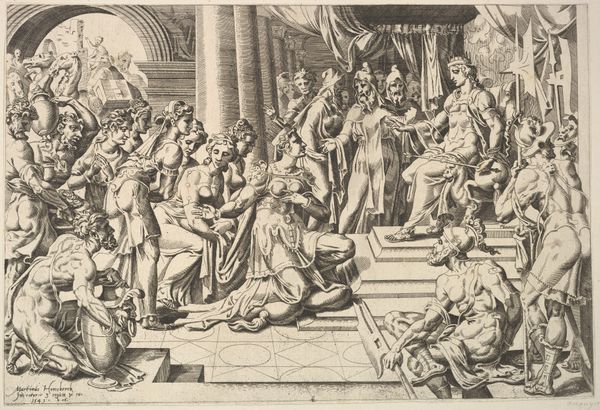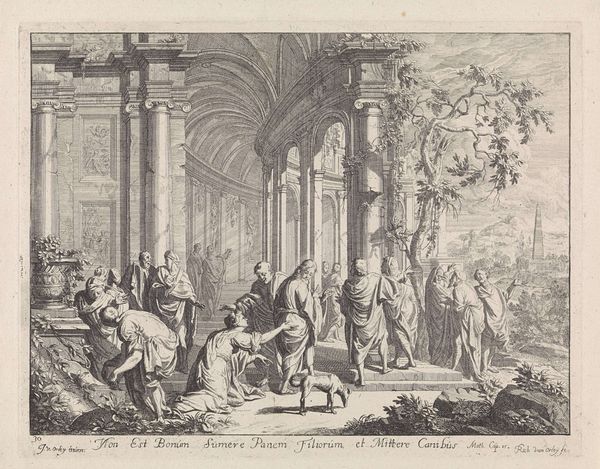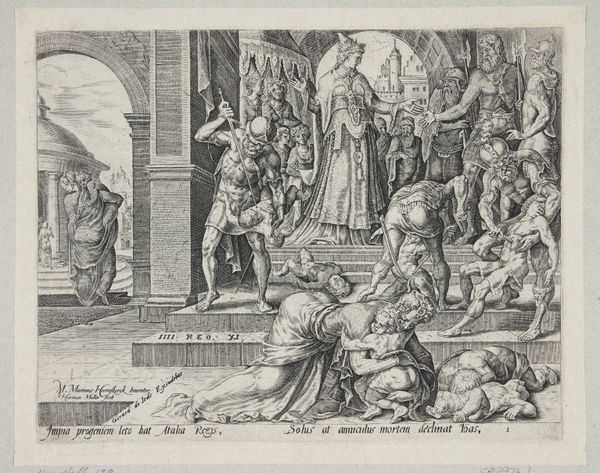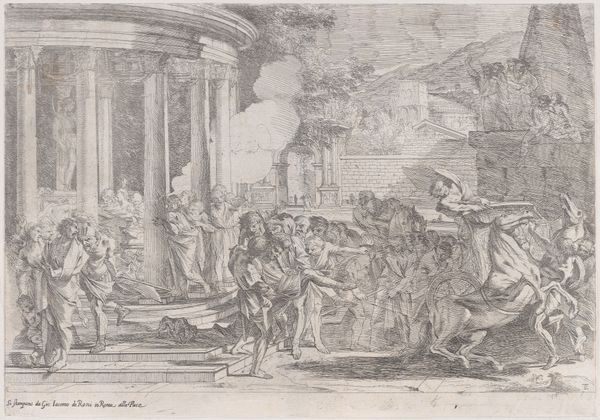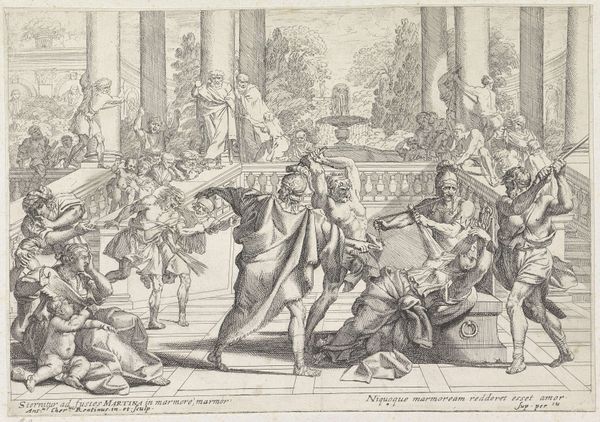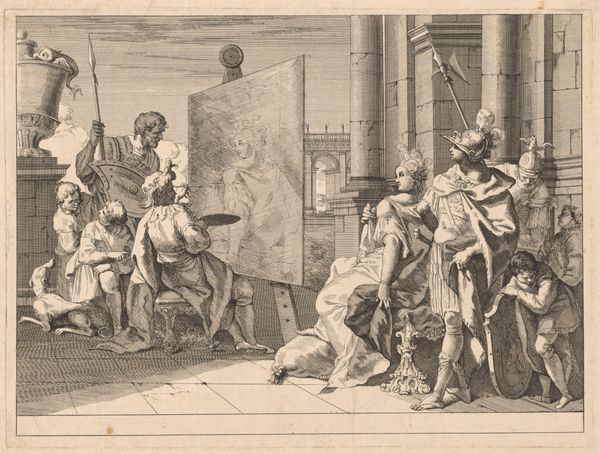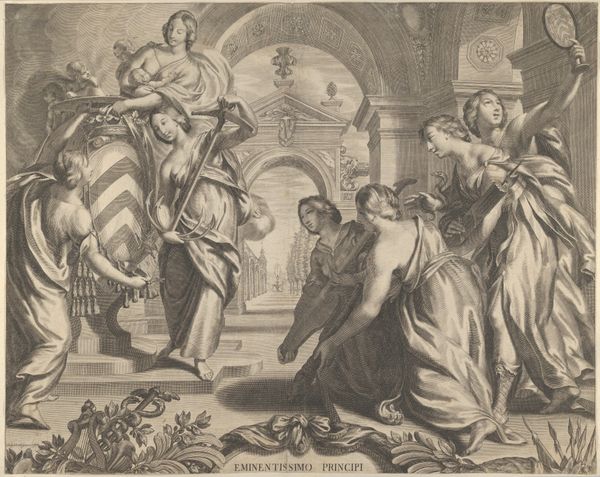
Saint James Cures a Blind Man, from "The Story of Saints James and Christopher in the Eremitani Chapel" 1776
0:00
0:00
drawing, print, etching
#
drawing
#
narrative-art
# print
#
etching
#
history-painting
#
italian-renaissance
Dimensions: Sheet (Trimmed to plate): 12 1/2 × 16 1/8 in. (31.8 × 40.9 cm)
Copyright: Public Domain
Editor: This etching by Giovanni David, made in 1776, is titled "Saint James Cures a Blind Man." It recreates a fresco. What jumps out to me is the detail achieved with just etching. How can we interpret this work through its materials and process? Curator: Let's consider the accessibility of prints like this in 18th-century Italy. This etching, being a reproduction of a fresco, democratizes access to art. Frescoes are fixed in place, limited to the viewership of those visiting that specific chapel. Prints, on the other hand, were more easily disseminated through networks of commerce. Consider the materiality of the print itself - paper and ink, readily produced and traded, in contrast to the pigments and plaster needed for a fresco. This makes it part of a whole network of distribution, where images can be circulated to a broad viewership. Editor: So, the choice of etching influences its audience and impact, because it’s easily reproducible? What do you think of its cultural context and connection with religion? Curator: Yes. The image also depicts a miracle; in this light, think about how this print plays a role in spreading religious ideas and reinforcing faith, while also being a consumer good. What is the connection between spiritual consumption and consumer capitalism in the 1700s? And what does that tension mean for religious beliefs? We also shouldn’t neglect the artist's labor in producing the etching. It's a skilled craft, demanding meticulous work. Editor: That's interesting, viewing the image's purpose both as religious devotion and commerce at the same time, all thanks to its materiality. Curator: Exactly. Considering the etching process helps us appreciate the layers of meaning embedded within.
Comments
No comments
Be the first to comment and join the conversation on the ultimate creative platform.
